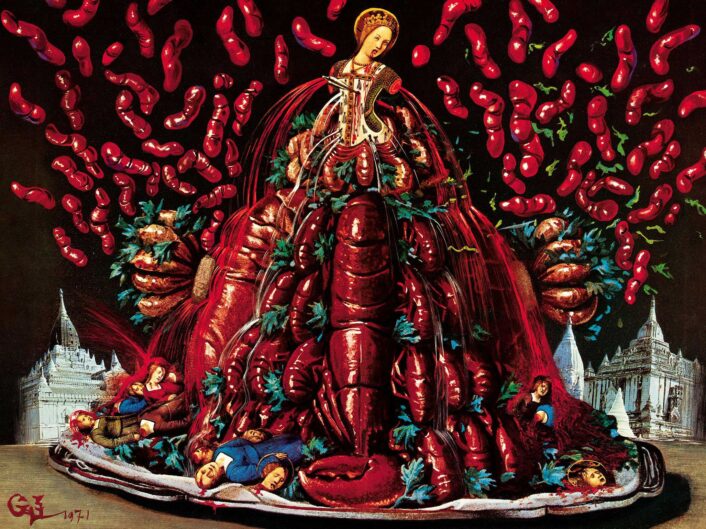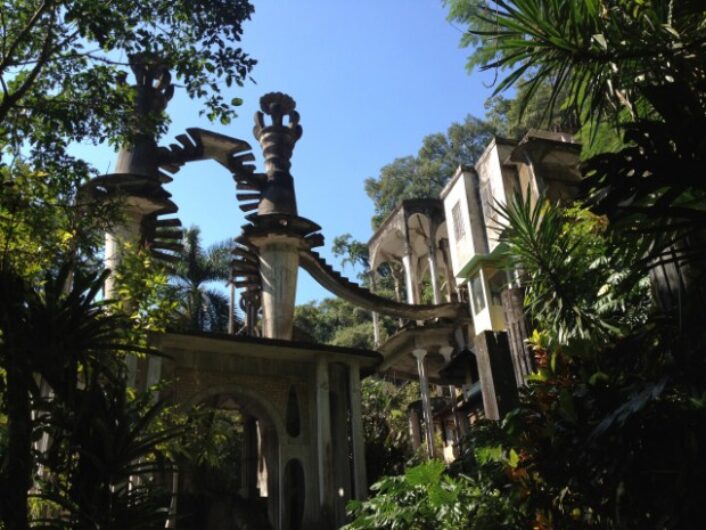Culture
The rise of Surrealism in Mexico
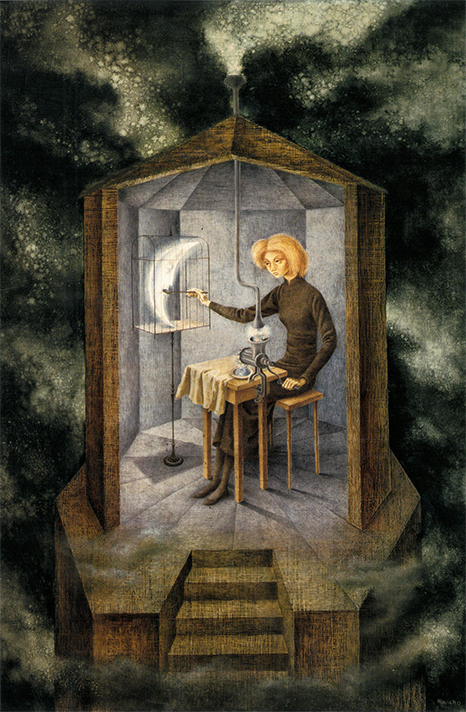
Remedios Varo’s “Papilla estelar” (Celestial Pablum), 1958. The scene is of a woman sitting along in a tower-like structure winding a meat-grinder filled with the galaxy and stars.
Image courtesy of: Eazel
Surrealism started in Paris, as part of a sprawling art scene that evolved out of the smoky cafes where artists such as Salvador Dali, Man Ray, and Leonora Carrington would sit for hours, analyzing their dreams in order to tap into their subconscious thoughts. However, the rise of World War II forced many artists to flee Paris in search of more accepting locales.
At the time, Mexico’s immigration laws were not as strict as those in the United States. Lazaro Cardenas, Mexico’s president, was eager to accept those who were politically aligned with his regime. Thus, it was only a matter of time before some of the world’s most progressive artists were calling Mexico- “home.”
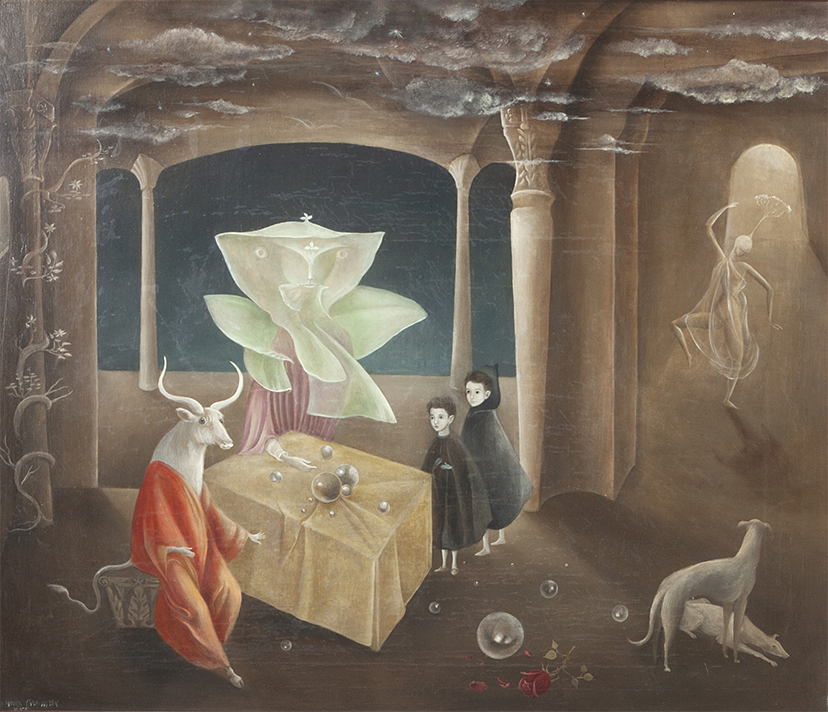
“And Then We Saw the Daughter of the Minotaur”, 1953. The Leonora Carrington painting shows fantastical figures, a seated goddess/mystical figure with a cow’s head and a green moth-flower emerging as a giant leaf.
Throughout her life, Carrington’s work features her exploration of female sexuality, the female body, and the important role of women in creative processes throughout all mediums.
Image courtesy of: The New York Times
The arrival of Andre Brenton in Mexico, and his decision to stay, was instrumental in bringing more Surrealist artists to the country. Known as the co-founder, leader, and principal theorist of surrealism, he was persuaded by friends to escape the political pressures of France and to come to Mexico in 1938. Just two months after his arrival, Brenton hailed Mexico as “the Surrealist place par excellence.”
Before long, European Surrealists including Remedios Varo, Leonora Carrington, and Wolfgang Paalen had made Mexico their home… happily co-mingling with local artists including Frida Kahlo. It wasn’t long before they were all incorporating their whimsical thoughts onto their canvases.
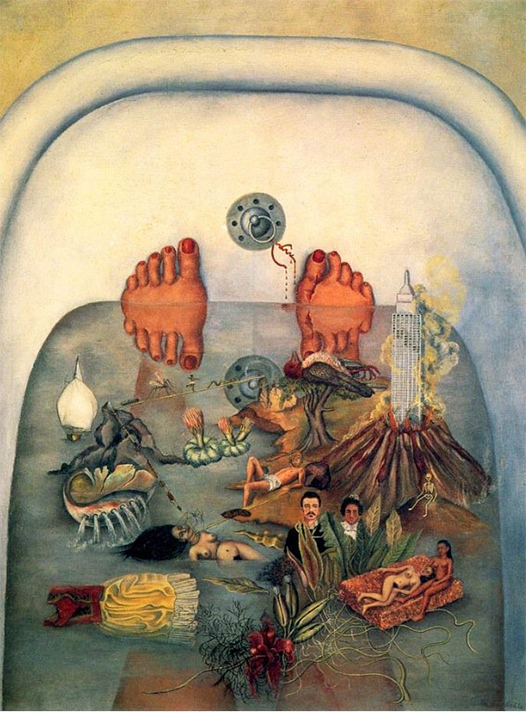
Kahlo’s 1938 “Lo que el agua me ha dado.”
Image courtesy of: Immersion en Mexico
A strong shift occurred when the Surrealist artists arrived in Mexico… the art transformed rather than simply migrating. The European artists who arrived were already interested in the pre-Columbian artifact and Mexico’s contemporary art… and vice-versa.
When Breton visited Kahlo’s studio, he was amazed. The artist was in the finishing stages of completing “Lo due el aqua me ha dado”, a canvas that included several symbols that were influential to her: a traditional Mexican Tehuana dress, the artist’s parents, and a volcano erupting from the Empire State Building. These items all danced around her toes. Brenton had never seen anything quite like this before and instantly invited Kahlo to exhibit in Paris. Incidentally, her show left everyone in awe. Kahlo said (courtesy of Di Donna), “I never knew I was a Surrealist until Andre Breton came to Mexico and told me I was one. I myself still do not know what I am.”
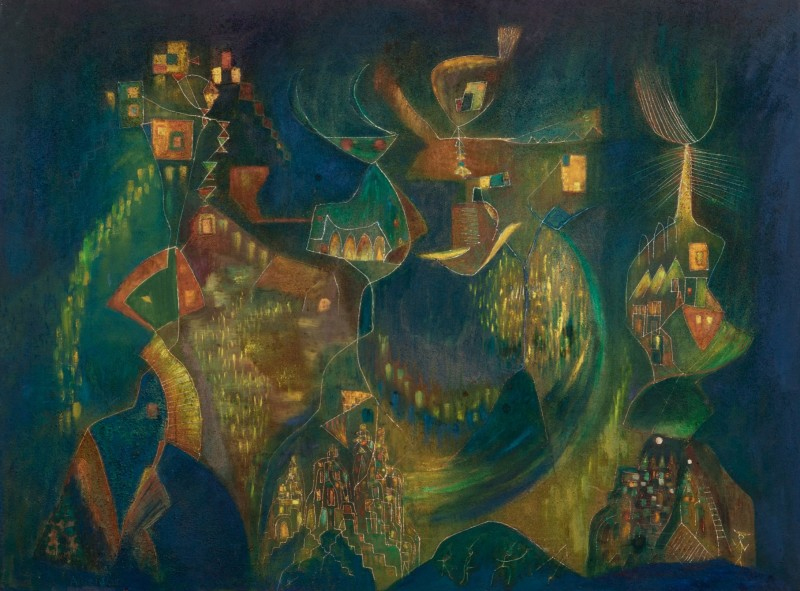
Alice Rahon’s “Los Cuatro Hijos Del Arco Iris,” 1960. Oil and sand on canvas.
Rahon describing her work (courtesy of Sotheby’s), “In the earliest times painting was magical; it was a key to the invisible. In those days the value of a work lay in its power of conjuration, a power that talent alone could not achieve. Like the shaman, the sibyl and the wizard, the painter had to make himself humble, so that he could share in the manifestation of spirits and forms.”
Image courtesy of: Sotheby’s
Especially interesting is the “trio of Surrealist female artists.” Remedios Vara, Leonora Carrington, and Kati Horna all fled separately from the strict gender roles that were prevalent in Europe. In Europe, until the 1940’s, the position for female Surrealists was delineated to being a muse. The women, along with Frida Kahlo, were bolstered by their understanding of Mexico’s ancient matriarchal societies and the pagan cults where women held immense power.
This collection of female artists had the freedom that was non-existent to them in pre-war Europe. Their arrival in the country marked the end of the male-dominated realm of the surrealist art in Mexico during the 1930s and 1940s. Outside of art, some artists also took this opportunity to become politically active. Carrington, who had escaped her wealthy and aristocratic European family, rebelled further by becoming a founding member of Mexico’s Women’s Liberation Movement.
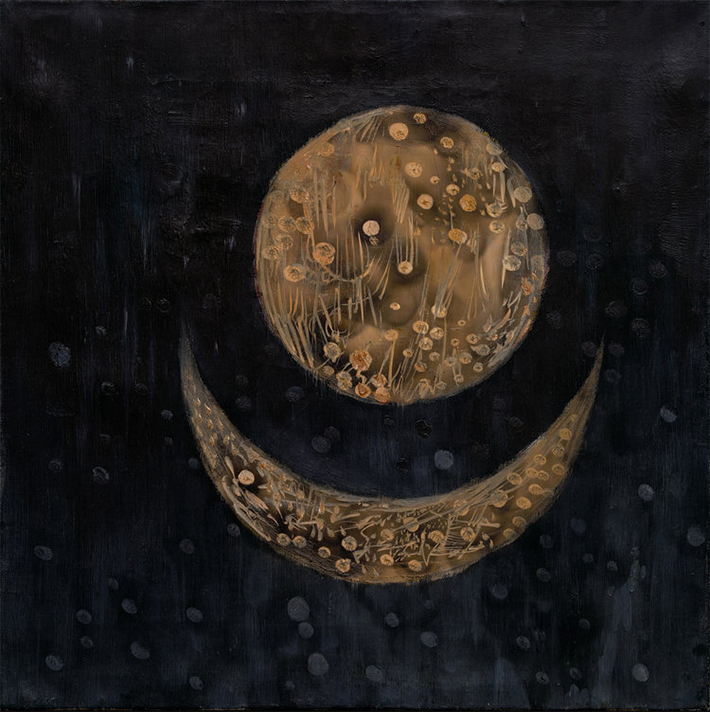
Wolfgang Paalen, “Untitled”, 1940. Oil and fumage on canvas.
Paalen was an Austrian artist who fled war-torn Europe in 1939 and arrived in Mexico at Frida Kahlo and Diego Rivera’s invitation. Paalen made Mexico his home for several years until he moved to California with his new wife. Two years later, the divorced artist returned to Mexico and remained there until his death.
Image courtesy of: Gallery Wendi Norris
More than simply to escape political ideologies, many of these artists found Mexico to be a country offering a great deal of inspiration. Both the country’s luscious landscape and the mystical traditions that are woven into everyday life help to transform the Surrealism of Europe to a movement that became more inclusive and innovative. Not even Breton could have imagined how transformation living in Mexico was, when visiting in 1938, he was amazed that modern ideologies co-exist in perfect harmony with the surrounding magical atmosphere.
Perhaps it was Salvador Dali who said it best. After visiting Mexico he said (courtesy of Fusion Magazine), “There is no way I’m going back to Mexico. I can’t stand to be in a country that is more surrealist than my paintings.”
